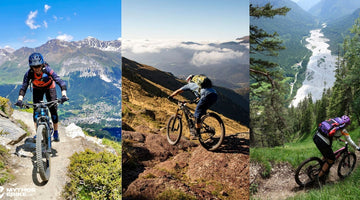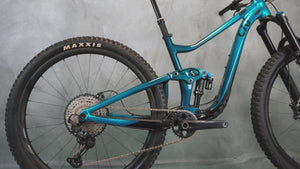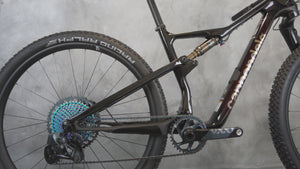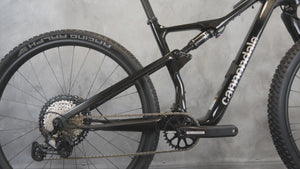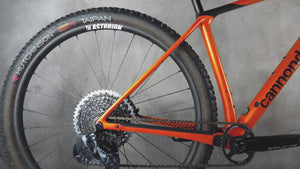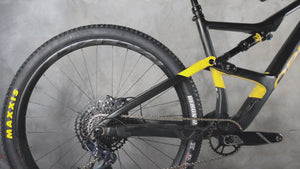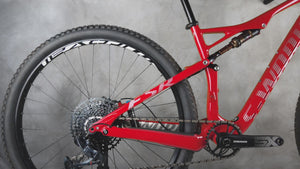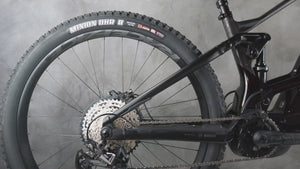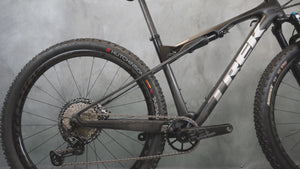Buying guide: Used Mountainbike
In this Article
Posted on September 27, 2021
Do you feel ready to conquer new lands? Rolling on more difficult trails do you look? Are you understood, how to resist the call of adventure?
The mountain bike is ideal for spending time in nature and discover new places and playgrounds. Of course, at first, mountainbike practice will surely seem hard, but it is a very accessible sport and your progress will be dazzling if you are assiduous.
In addition, there are a ton of places to ride anywhere in the world. And you have surely full of pretty corners next to you. But to conquer more textured soils and therefore more difficult, you have to equip you.
No worries, there is a vertiginous fan of Bike Different, designed for all kinds of cyclists, trails, land and shopping.
But, what elements take into account in your choice of mountain bike?
Know that the mountain bike has become the most sold cycling type. The models are more and more innovative to offer us ever more incredible sensations!
Its success is also due to the fact that many people use every day, especially to go to work. It should also be noted that since the health crisis, many people have bikes (which is a very good evolution!).
Then there are also those who use them because they are looking for adrenaline. The most worked models will enchant you.
It's a lot of mountain bike models for different types of cyclists. We understand that you can feel lost. To help you in your choice and find your happiness, we present 5 key elements to take into account when buying the mountain biking of your dreams.
What frame size choose?
We will never repeat it enough, the size is important! The right size for a mountain bike will make your exits much pleasant and will allow you to ride with confidence.
As for clothes, the size of the mountainbike varies according to the mark and the model. If you already have a mountain bike, it is advisable to rely on the brand and size of this bike as a starting point to choose your new mountain bike. If you are totally novice, here is a table that could help you:
MTB Size Guide
|
Frame dimension |
Frame size |
Minimum cyclist size |
Maximum cyclist size |
|
33 cm |
Xs |
147 cm |
158 cm |
|
38 cm |
S |
158 cm |
168 cm |
|
43 cm |
M |
168 cm |
177 cm |
|
48 cm |
I |
177 cm |
188 cm |
|
53 cm |
XL |
188 cm |
200 cm |
What material to choose for your frame?
In general, you have two choices of materials for mountain bike frames: aluminum and carbon fiber. The steel and titanium mountain bikes are also options to know, but they are less common and are more typical of hardtail frames, without a rear suspension.
But, how to choose between aluminum and carbon?
- Aluminum bikes are often cheaper than carbon bikes for comparable specs.
- Carbon bikes are usually lighter than aluminum bikes.
- Damaged aluminum bikes can not be repaired, unlike carbon frames. That said, carbon is more likely to be damaged by shocks.
If you are looking for performance and lightness, we advise you to opt for a carbon bike (even if it involves spending a little more). Its value to the resale will also be better, so one in the other, you find yourself there.
If, on the contrary, the weight is not a concern for you, choose an aluminum bike, then consider an additional budget to improve the components.
If you are not very careful, that you tend to mistreat your bike while rolling or falling regularly, consider an aluminum bike, it will be more resistant.
Hardtails made of steel and titanium are also excellent choices if you prefer long-lived and long-lasting bikes.
MTB component guide
When we talk about components, we usually refer to the elements of the transmission - derailleur, cassette, chain, crank and controllers - and brakes. The cockpit components and contact points such as handlebars, stem, saddle stem and saddle are also to take into account when buying a used mountain bike.
The two most common transmission and brake manufacturers are Shimano and SRAM. The brand you choose will depend largely on your personal preferences. The entry-level transmissions are generally cheaper, but less refined and heavier. When you are more experienced and more demanding, high-end components will become more attractive.
Basic hierarchy of components
|
|
Shimano |
Sram |
|
Entry level |
Deore |
Sx |
|
Mid-range low |
Slx |
Nx |
|
Mid-range high |
DEORE XT |
GX |
|
Top of the line |
XTR |
X01 / XX1 |
What suspension choose?
The integral suspension bikes use a shock absorber and a linkage to allow an additional suspension at the back.
The main advantage of a complete suspension bike is that the rear suspension helps absorb the impacts and gives you a greater margin of error when you get off a high speed trail. It also improves your comfort on rugged terrain.
You can be less picky on the choice of tracks and make less effort than on a hardtail. There is a wide range of travel options, depending on the driving style you prefer.
If you prefer smooth tracks, if you plan to participate in cross-country races or if you simply want a lighter bike, a complete cross-country cross-country bike with a 100 to 120 mm clearance will be the best choice . The majority of leisure cyclists rolling on a wide variety of land will want a versatile bike whose travel is between 120 and 150 mm, vaguely called "hiking bike". Finally, if you want to make steep and difficult descents, an enduro bike with a 150 mm move or more will help you down the slopes with more confidence and speed.
5. To finish, how much spend for a mountain bike?
Like the different items mentioned in this article, the budget of your future mountain bike is your personal choice. If you are beginners, it is normal to try to spend less at the beginning to give you the time to try the ground and see if you discover a passion for mountain biking.
In this case, we recommend choosing a bike between 1,000 and € 2,000. Although MTB technology is changing rapidly, if you buy a used mountain bike produced over the last 3 to 5 years, you will get a better quality bike and avoid depreciation.
If you already have a mountain bike experience and that you have a Intermediate level, it is normal to have some little higher expectations about your future companion. A fork between 2,000 and € 3,000 will be very good. The suspension components will be more efficient, the transmission will be more accurate and the bike will be lighter.
If you are already a passionate runner or you're looking for performance, everything is possible. The sad reality is that, as in many areas, the more expensive bikes are almost always more efficient. The question is how much you can afford to spend to get the improvements that derive from the purchase of a mountain bike of € 4,000-5 000 € or even more.
 If you need help discerning a bike class or to choose the bike that suits you, you can always contact our expertise for help.
If you need help discerning a bike class or to choose the bike that suits you, you can always contact our expertise for help.
See you soon on the slopes!
















